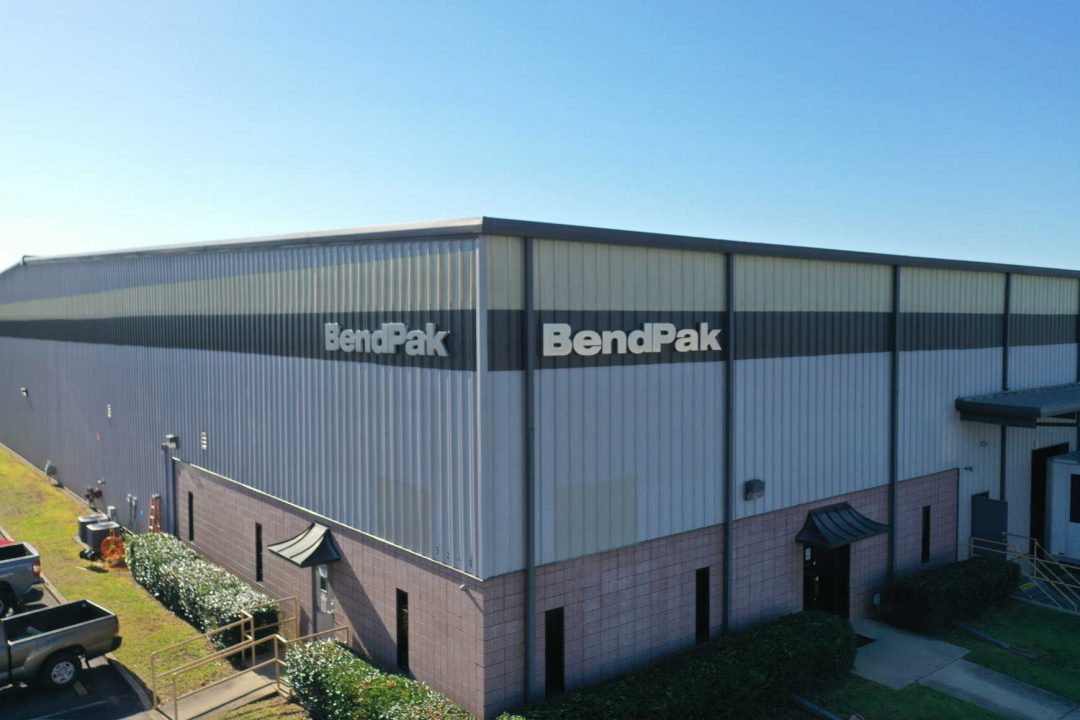Automotive lift producer BendPak opens new distribution center near APM Terminals Mobile to serve US Gulf, Midwest, East coast and Canadian markets via five Class I railroads.
BendPak, which manufactures and sells automotive lifts used in car dealerships and parking garages, has joined such major companies as Walmart, Amazon, Kia, Airbus, Bombardier and Mercedes Benz in selecting the port of Mobile and the state of Alabama as a hub for global logistics supply and distribution as well as manufacturing.
Santa Paula, California-based BendPak has opened a new 100,000-square-foot distribution center in Theodore, Alabama which is 11 miles from the APM Terminals Mobile container terminal. The new administrative and shipping complex has easy access to three major interstates and five Class I railroads helping BendPak to deliver products same-day or next-day to more customers in the eastern half of the country.
Reduced delivery times
“Opening the Mobile distribution center represents our continued commitment to being the industry leader and best at serving our customers, and part of that commitment means reducing delivery times,” said Don Henthorn, BendPak president and founder. “This new facility brings our products geographically closer to our customers and that makes a huge difference.”
The new warehouse will stock all of BendPak’s popular products including its Ranger, QuickJack and Autostacker brands. A future training facility will include a classroom and fully appointed service bay to offer customers a convenient option for quality technical training on BendPak’s expanding product lines.
“This new distribution center will enhance our ability to get our customers what they need, when they need it,” said Jeff Kritzer, BendPak’s executive vice president. “Today’s consumer expects immediate delivery and we’re focused on helping that become a reality. The definition of Mobile is agile and transportable. We couldn’t think of a more befitting name to call this beautiful city, our new home.”
The new distribution center is strategically located in Mobile County, Alabama, allowing for easy access to I-65, I-10, I-165, and Highway 43. Located in the heart of one of America’s largest logistic hotspots, the new fulfillment operation will offer next-day or two-day delivery to a large share of BendPak’s customer base on the eastern half of the US.
BendPak’s California headquarters and distribution multiplex in Santa Paula, will continue offering shipping and order fulfilment services to approximately 15 western states. BendPak plans to continue its expansion efforts in order to improve geographic shipping advantages.
First-class inter-modal connections
APM Terminals Mobile handled 419,000 TEU in 2019 and recently expanded the Inland Container Transfer Facility for rail cargo as well as expanded the berth in 2020 to accommodate two or more ships at the same time.
“We’re in the middle of the country, enabling companies to reach four major population centers in one day: the US Gulf, the U.S. East Coast, the U.S. Midwest and Canada, stated Brian Harold, Managing Director of APM Terminals Mobile, Alabama.“Supply chain flexibility, speed and lower costs create a more competitive edge. Supply chain leaders like our fast access to commercial US centers via multiple landside logistics options: five Class I railroads, trucking and 15,000 miles of inland waterway connections. These integrated offerings make supply chains flow easier, smarter and with less cost. We are constantly looking for new ways to improve supply chains and attract more business through our port.”
Transit times between Asia and US inlands are comparable via Mobile routing for those customers looking to add to their gateway supply chain options.
APM Terminals Mobile working in partnership with the Alabama State Port Authority opened in 2008. “The tremendous growth we have been experiencing here is the result of our strong partnership with the ASPA and Jimmy Lyons’ vision to grow the port as an economic engine,” observed Mr. Harold.
The ASPA will be deepening the Mobile harbor to 50’ starting in 2021 to accommodate the largest vessels in the global fleet and ensure future logistics competitiveness for the port. The economic development teamswithin ASPA, regional, and state work together with exceptional speed to assist companies locating to the area.
“We would like to thank Alabama Governor Kay Ivey, the Alabama Secretary of Commerce, Greg Canfield and the Mobile Chamber of Commerce for their success in attracting new business to the region,” added Mr. Harold.
A new refrigerated warehouse is also being added to enhance the port’s distribution center attractiveness. MTC Refrigerated Warehouse will open in January 2021 to serve international supply chains with the most modern refrigerated technology and capacity for future growth of cold chains.

























